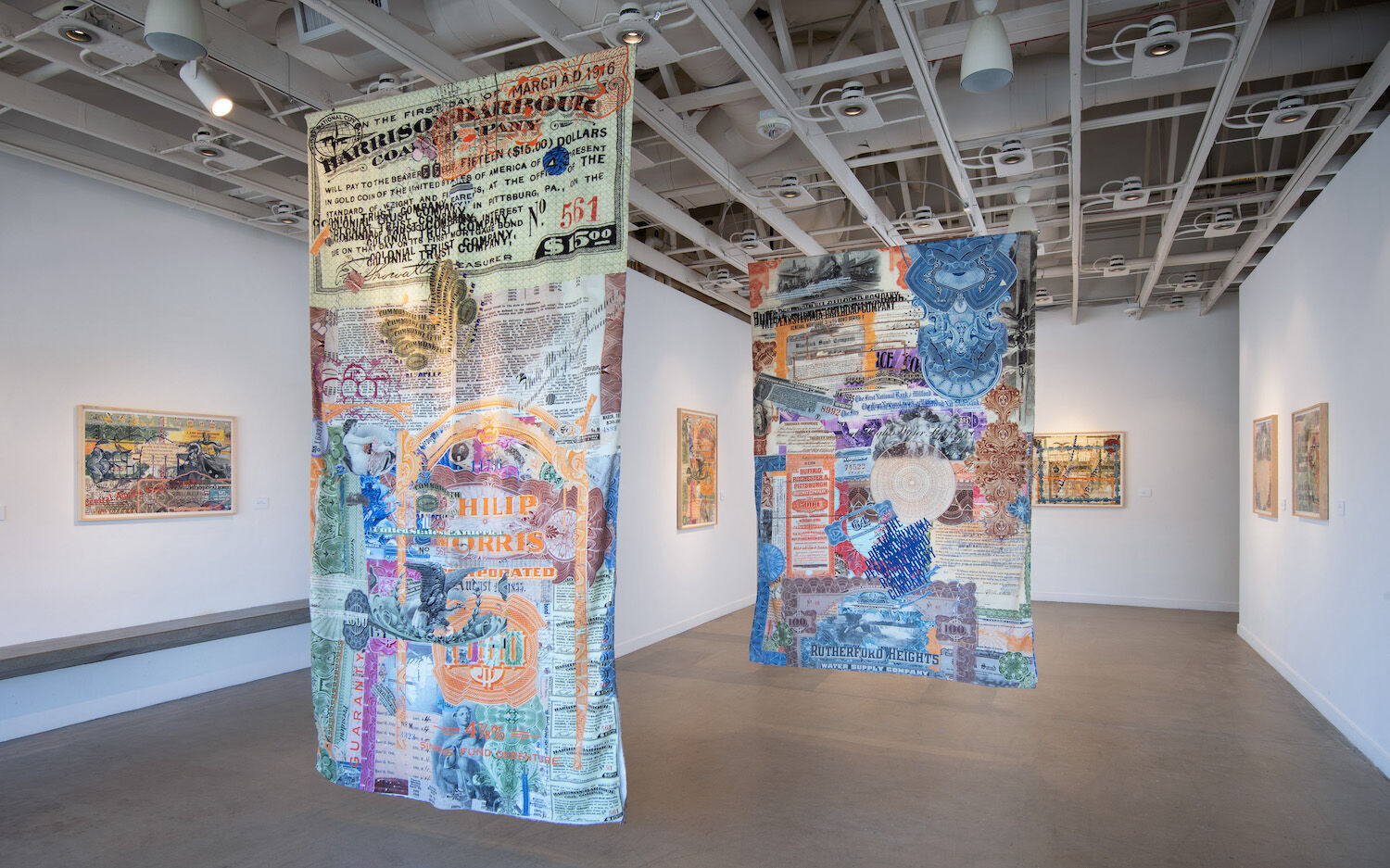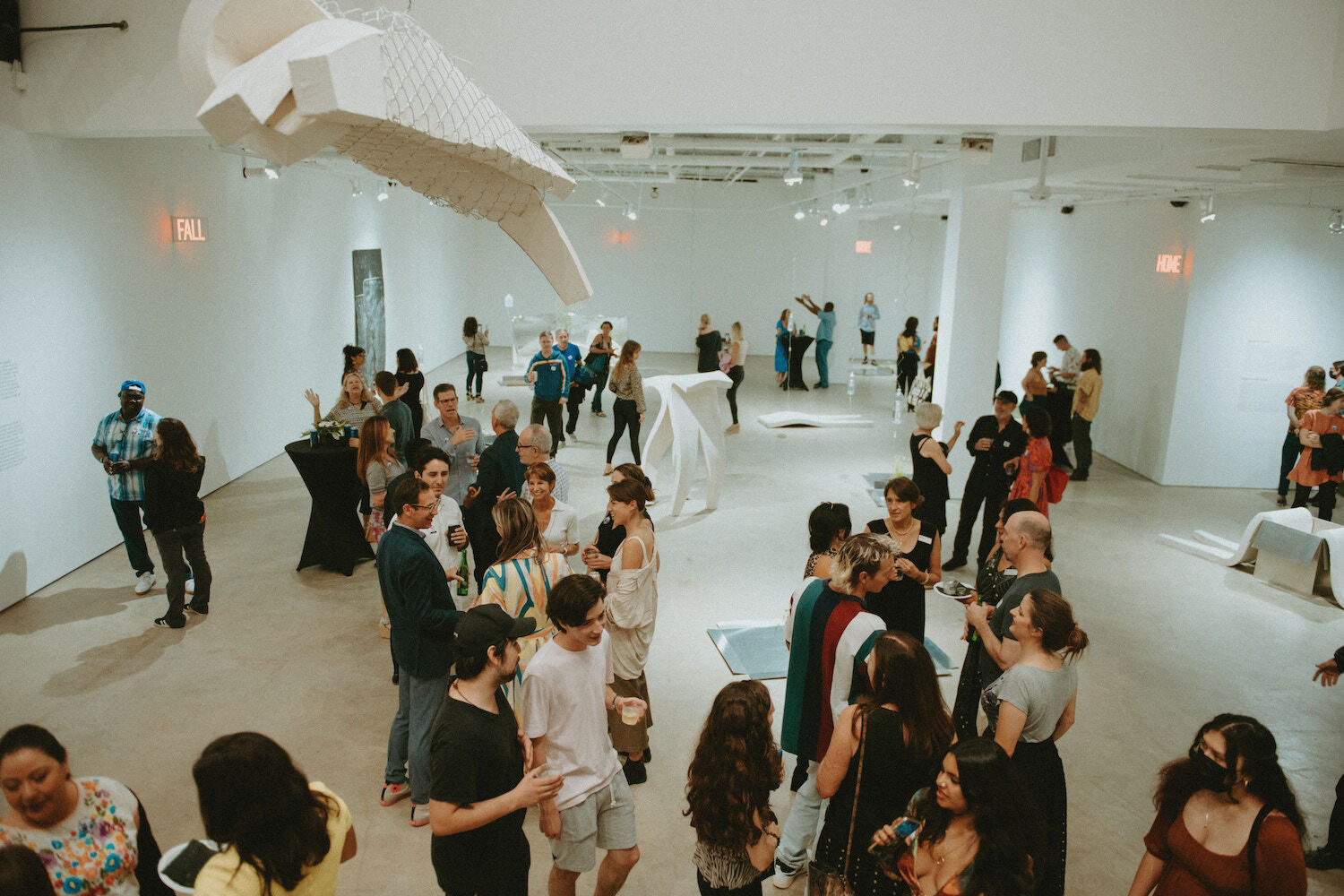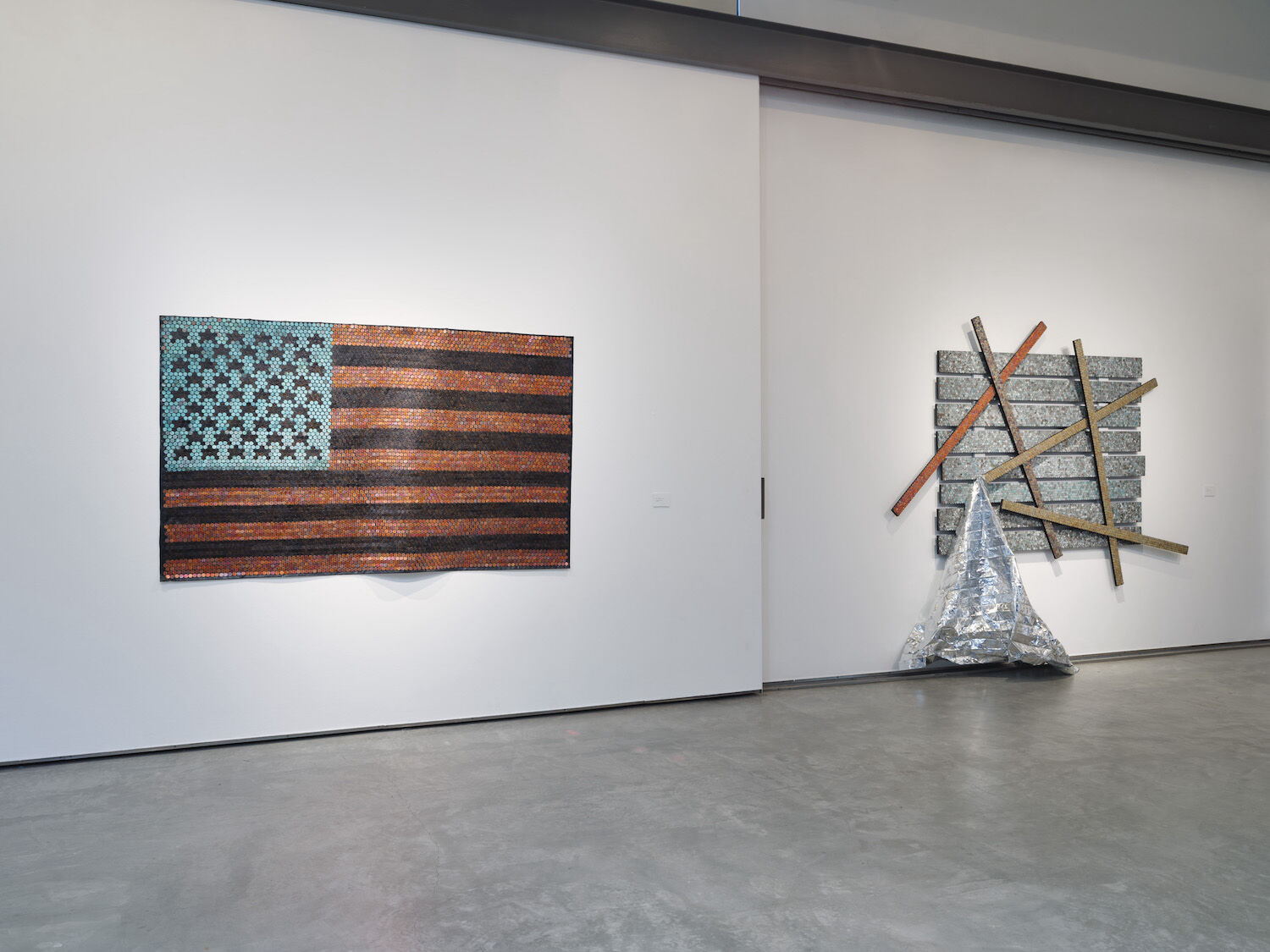
Carolina Caycedo’s “Aesthetics of Commodity” examines the language of bond and stock certificates, and how it perpetuates colonial legacies.
In September, the Institute of Contemporary Art San Diego (ICA San Diego) launched its 2022-23 exhibition season, titled “Limitless Growth, Limited World,” featuring 11 exhibitions by renowned artists from around the world that explore human consumption and its impact on our environment and cultures. The works appear at ICA’s “North” location in Encinitas. For me, it scratches an itch: Lately, I’m obsessed with interrogating the concept of growth at all costs in a world with finite resources. Thankfully, I’m not alone in wondering what the hell comes next for humanity.
The first two exhibits, which ran in September and October, directly examined money. Los Angeles-based artist Carolina Caycedo examined equity stock and municipal bond certificates from Puerto Rico, Virginia, and Pennsylvania, showing how their visuals and language perpetuate colonial legacies. Puerto Rico’s bond crisis has held the island in an economic chokehold for decades. October’s exhibit featured Ghanian artist Yaw Owusu, whose “A Penny, for What it’s Worth” employed various techniques for oxidizing pennies. The different hues of bronze, blue, gold, green, pink, black, and white were arranged into a variety of striking sculptural wall pieces, including the image of the United States flag and the border fence.

art-opening-sdm1222-limitless.jpg
December’s exhibit takes the concepts of currency and capital a step further by examining spaces where commerce occurs. “Tianquiztli: Portraits of the Market,” by cross- border artists Cog•nate Collective, is an anthropological work featuring photos and sketches illuminating the world of street markets and swap meets, particularly those in Southern California and Baja, where they’re from. They view the markets as portals that link people materially even when the border separates them physically or socially. There’s even a little healing time travel involved. “I think the other dimension is how these spaces become spaces of nostalgia, how they become these portals to our past, to childhood, to home as an experience of home elsewhere,” says Misael Diaz, one half of the duo.
Tianguis is a word for a street or community market, derived from tianquiztli, which is Nahuatl for “gathering place.” Tianquiztli is also the name of the Pleiades constellation. Diaz and her artistic partner, Amy Sanchez, were inspired by the links between modern Mexican-style markets, their roots in pre-Columbian commerce centers, and the clustered appearance of the constellation, which, “on its own could be considered a celestial marketplace,” Sanchez says. At the very least, it’s a meeting spot, which the artists argue is as much a central function to markets as buying and selling goods is. This exhibit is their effort to bring these three elements into conversation.

Yaw Owusu’s “A Penny, For What it’s Worth” features pennies oxidized using different techniques to draw out different colors. The coins are then arranged in different wall sculptures, like the United States flag.
For me, it brings up lots of questions, especially around the increasingly sanitized, automated shopping experiences that are becoming devoid of human interaction, reducing such outings to mere commerce. Rarely do we stop to think of what we lose when we focus on just the exchange of goods and services, and that’s just one part of the overall human consumption quandary. Future exhibits in the ICA San Diego series examine environmental degradation and its links to political upheaval, the neo-colonial effects of mass tourism, how corporate marketing has affected our abilities to place accurate values on goods, the oft-ignored labor issues behind agricultural production, and much more.



















